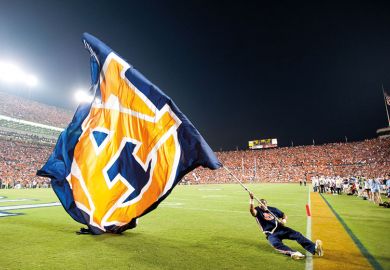Already one of the biggest and fastest-growing online providers in the US, Southern New Hampshire University is adding a major new branch to its blossoming empire of prove-you-can-do-it badges and degrees.
SNHU, with more than 130,000 undergraduate-level students, is merging with Chicago-based LRNG, another private non-profit operation that specialises in awarding educational credentials that affirm job-specific skills.
While SNHU offers workplace-focused programmes for university-age customers, LRNG works primarily with pre-college teenagers in certifying abilities that employers regard as important.
“Our goal”, SNHU’s president, Paul LeBlanc, said of the merger, “is to create a seamless pathway from LRNG badges to college credit-bearing badges and micro-credentials.”
SNHU is a leader among a growing number of not-for-profit private US universities that are putting significant emphasis on online courses, hoping to succeed where many for-profit models have been discredited.
And beyond its more conventional online course offerings, SNHU offers a “competency-based education” version that awards students college credit for the skills and abilities that they can demonstrate. LRNG similarly lets its 50,000 mostly low-income teenage students earn competency badges through partnerships with businesses and community organisations that either teach job-related skills or assign credit for abilities that the students have shown in previous jobs.
LRNG, now operating in 19 US cities, was founded in 2015 with a $25 million (£19 million) investment from the John D. and Catherine T. MacArthur Foundation. SNHU has its origins as a for-profit in 1932, became non-profit in 1968, and exploded in size after Dr LeBlanc arrived in 2003 and started creating the online options. It has 3,000 on-campus students.
The exact shape of the LRNG-SNHU connection isn’t fully clear. Maria Hibbs, executive director of the Chicago Learning Exchange, an LRNG local partner, said that she doesn’t foresee large numbers of her teenage participants moving on to become full-fledged undergraduates. But she said that the partnership could allow for the badges to be translated by SNHU into some form of academic credit.
Along with size, SNHU and Dr LeBlanc now enjoy some level of respect in US higher education, even among ardent critics of the online for-profit colleges that grew rapidly a decade ago with the help of federally subsidised student loans.
Like SNHU, many for-profit colleges aimed to serve lower-income customers in need of marketable job skills. But with the ability to offer federally subsidised loans, the profit-driven institutions often turned to recruiting poorly qualified students and offering them low-quality teaching, leaving many with little improvement in their job prospects and unaffordable amounts of debt.
“Lord knows we need legitimate alternatives to predatory online providers, so to whatever extent [SNHU] can step into that vacuum and do something that is more wholesome and more beneficial to their students, more power to them,” said Barmak Nassirian, a long-time critic of for-profit educational models who now serves as director of federal relations and policy analysis at the American Association of State Colleges and Universities.
But even for those willing to give Dr LeBlanc the benefit of the doubt, the sheer speed of SNHU’s growth is concerning. Any shortfalls in the SNHU model, if they exist, Mr Nassirian said, probably wouldn’t be evident for a decade or more, when large numbers of employment outcomes are known. Poor results for SNHU graduates wouldn’t necessarily mean that the online operation had been intentionally cutting corners, he said, but could mean that SNHU hadn’t taken enough time now to be sure of its methods.
“How do we know that this is not a reckless exercise with real live human subjects?” Mr Nassirian asked. “That’s the challenge.”
Register to continue
Why register?
- Registration is free and only takes a moment
- Once registered, you can read 3 articles a month
- Sign up for our newsletter
Subscribe
Or subscribe for unlimited access to:
- Unlimited access to news, views, insights & reviews
- Digital editions
- Digital access to THE’s university and college rankings analysis
Already registered or a current subscriber?







